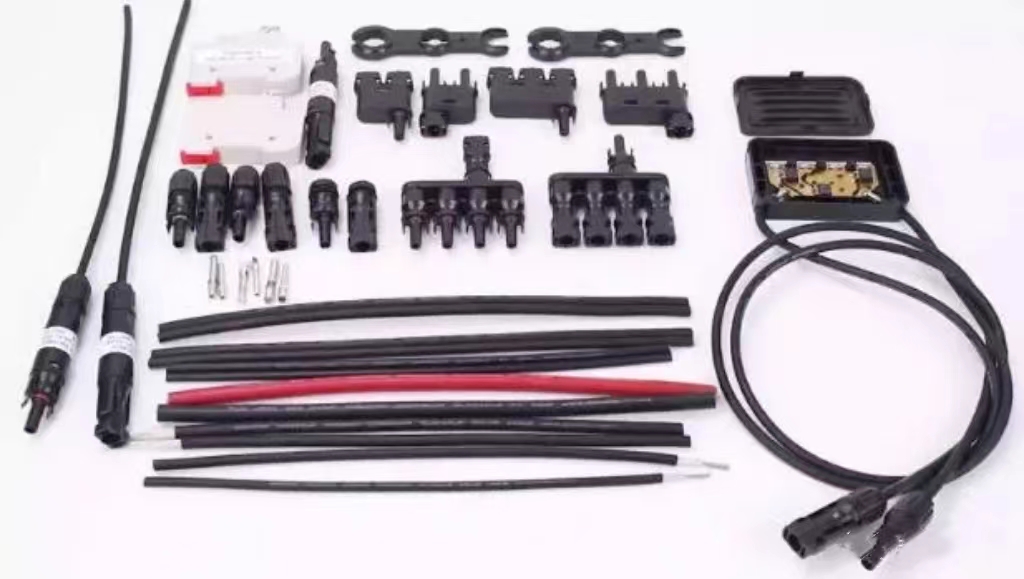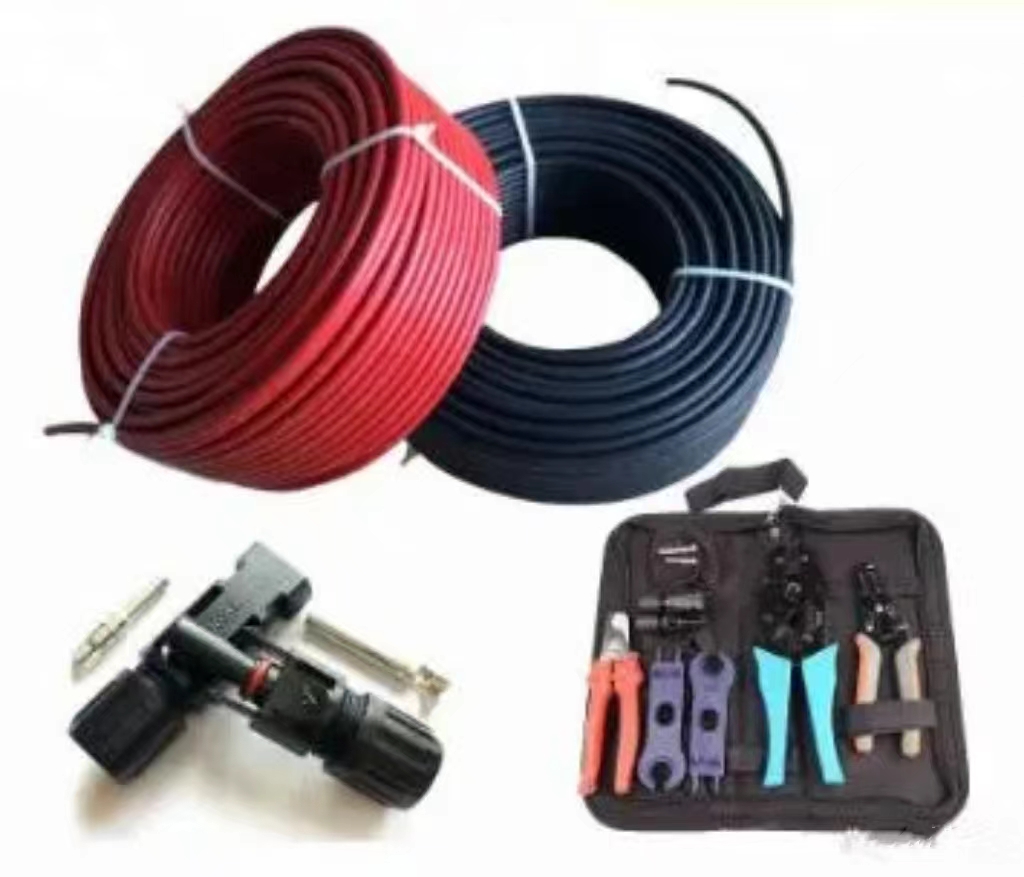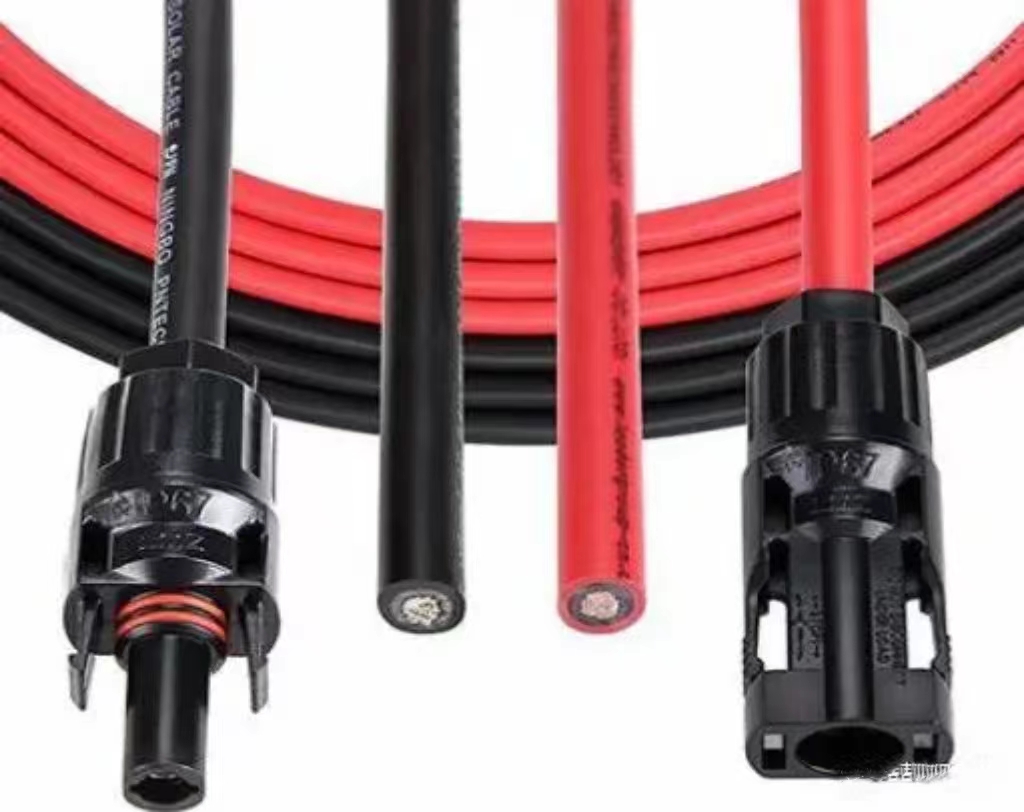We know about solar power generation technology, but do you know what is the difference between the photovoltaic cables used for transmission after solar power generation and the cables we usually use?
In this article, I will take you to know the different types of photovoltaic cables and understand their key characteristics, hoping to deepen your knowledge and understanding.
Determining the cable size and specifications that are suitable for your solar system is essential to ensure efficient power transmission and avoid energy loss.
After learning this article, you will have a comprehensive understanding of solar photovoltaic cables and have the knowledge to make smart decisions for solar power generation systems. So, let’s explore a new world together!
What is photovoltaic cable?
Photovoltaic cables are specialized cables used to connect solar panels to other components in solar power generation systems.
These cables play a vital role in the efficient and safe transmission of electricity generated by solar panels. They play a vital role in connecting solar panels to other components of the system.
Here are some key points to know:
Purpose
Photovoltaic cables are used as a way to transmit the direct current (DC) output generated by solar panels to the rest of the solar power generation system.
Structure
They are designed to withstand the harsh outdoor conditions commonly encountered in solar installations. They are made of materials that are resistant to sunlight, temperature changes, and moisture.
Insulation
They have a specially formulated insulation layer that prevents leakage and insulation breakdown.
Conductor size
The size of the conductors in PV cables is selected based on the current carrying capacity required for a specific solar installation.
Voltage rating
They have different voltage ratings to accommodate the voltage levels commonly found in solar power systems.
Safety standards
They adhere to specific safety standards and certifications to ensure reliable and safe operation within the solar industry.
Different types of solar PV cables
Single-core PV cables
These cables consist of a single conductor, usually made of copper or aluminum, surrounded by an insulation layer and outer jacket. They are typically used in smaller-scale solar installations.
Dual-core PV cables
Dual-core cables have two insulated conductors within a single cable jacket, and they are used to connect solar panels in parallel, allowing for the collection of higher currents.
Multi-core PV cables
These cables have multiple insulated conductors, usually three or more, within a single cable jacket. They are suitable for large solar power systems with complex wiring configurations.
Solar PV cable assemblies
These are pre-assembled cables with already attached connectors. They provide a convenient and efficient solution for connecting solar panels to other system components, such as inverters or junction boxes.
Solar PV Extension Cables
Extension cables are used to extend the reach of PV cables when additional length is needed between solar panels and other system components. They are available in a variety of lengths and connector types.
Solar PV Interconnect Cables
Interconnect cables are used to connect multiple strings of solar panels together, allowing for efficient power collection and transmission within a solar power generation system.
Each type has a specific purpose and is designed to meet the unique requirements of different solar installations. It is important to choose the right type for the specific needs of your solar system to ensure safe and reliable operation.
The Difference Between PV Cables and Ordinary Cables
One of the main differences between PV cables and ordinary cables is their insulation. PV cables have specially formulated insulation that is resistant to prolonged exposure to sunlight, temperature changes, and harsh environmental conditions.
This insulation protects against UV radiation, moisture, and abrasion, ensuring long-term performance and durability of the cable. In contrast, ordinary cables may not have the same level of UV resistance and may be more susceptible to degradation over time.
Another important difference is the voltage rating. PV cables are designed to meet the unique voltage requirements of solar power generation systems and are typically rated for direct current (DC) voltage levels, which are common in solar panels.
Conventional cables, on the other hand, are designed for alternating current (AC) voltage levels typically used in home or commercial electrical systems.
In addition, PV cables are engineered to withstand the high operating temperatures generated by solar panels exposed to sunlight. They have higher temperature ratings than regular cables, allowing them to operate safely at the high temperatures experienced by solar power systems.
When selecting PV cables, it is important to consider factors such as the required current carrying capacity, voltage rating, and compliance with industry standards.
Selecting the right type ensures that solar energy is transmitted safely and reliably within a PV system.
Please feel free to contact us for further information on solar cables.
sales5@lifetimecables.com
Tel/Wechat/Whatsapp:+86 19195666830
Post time: Jun-18-2024











